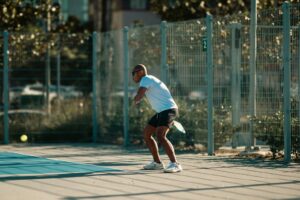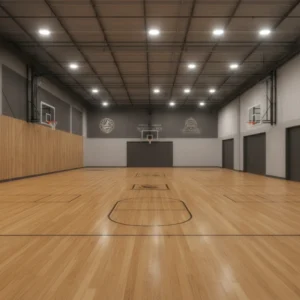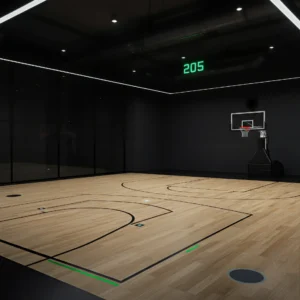Pickleball is no longer just a niche pastime; it’s a booming sport with millions of enthusiasts worldwide. Whether you’re a sports facility manager, a tennis player curious about the transition, or a pickleball lover eager for more courts, understanding the decision between constructing new pickleball courts and converting existing tennis courts is critical. This guide will break it all down for you—covering every detail, from construction costs to community engagement strategies.
The Rise of Pickleball
Pickleball is on a meteoric rise, becoming one of the fastest-growing sports globally. Invented in 1965 as a family-friendly game, it combines elements of tennis, badminton, and ping-pong. Today, it’s loved for its accessibility, social nature, and low barrier to entry.
How does pickleball differ from tennis? The court dimensions are smaller (20×44 feet for pickleball vs. 36×78 feet for tennis), the paddles are lightweight, and the plastic ball slows down gameplay, making it accessible to players of all ages and skill levels. This smaller scale also makes the installation of pickleball courts more affordable for facilities seeking to capitalize on this growing trend.
Pickleball Court Construction
Constructing new pickleball courts gives you the opportunity to design a space perfectly tailored to the sport’s specific needs. Here’s what you need to consider:
Surface Materials
When constructing pickleball courts, the surface material plays a crucial role in gameplay quality and longevity:
- Acrylic Coatings: Durable and slip-resistant, widely used for outdoor pickleball courts.
- Sport Court Tiles: Modular surface tiles provide excellent grip, shock absorption, and quick drainage. Ideal for those seeking a quick installation.
- Concrete: A cost-effective option, though it requires additional coatings for optimal performance.
Court Dimensions
The standard size for an outdoor pickleball court is 20×44 feet, including lines for both singles and doubles play. Courts should also leave adequate space for player movement, typically adding a perimeter area of 10 feet on all sides.

Net Systems
Pickleball courts require center nets at a height of 34 inches, with sturdy posts installed to maintain tension over time. These can vary between portable nets and permanent installations.
Cost Considerations
Constructing a standard outdoor pickleball court can cost between $20,000 and $30,000 per court, depending on surface materials, net systems, and additional amenities like lighting.
Investing in new construction provides a premium playing experience designed specifically for pickleball. However, the cost and space requirements might steer facility managers toward alternative options like converting existing tennis courts.
Tennis Court Conversion to Pickleball
With the surge in pickleball’s popularity, many sports facilities are opting to convert existing tennis courts. Here’s why—and how—you can do it.
The Conversion Process
- Evaluate Existing Court Conditions: Deciding whether your tennis court surface is suitable for conversion. Cracks or uneven surfaces must be repaired.
- Overlay Markings: Add pickleball court lines to the existing tennis layout. Often this involves different-colored lines to distinguish between sports.
- Portable Net Systems: For shared courts, portable pickleball nets offer flexibility. When dedicated pickleball courts are preferred, installing permanent nets is an option.
- Adjust Space: A single tennis court can accommodate up to four pickleball courts, potentially quadrupling the space’s utility.
Challenges
- Line Confusion: Overlapping lines for tennis and pickleball can confuse players and detract from the experience for both sports.
- Court Wear and Tear: If the underlying surface isn’t maintained, it may not meet the traction or durability needs for pickleball play.
- Community Pushback: Tennis players may resist shared or converted courts due to reduced availability for traditional tennis games.
Benefits
- Cost-Effective: Converting a tennis court to multiple pickleball courts costs significantly less than constructing new ones—typically between $5,000 and $8,000 for surface painting and portable nets.
- Maximizes Space: Facilities can now accommodate both tennis and pickleball, serving broader community interests.
- Quick Turnaround: Conversion is a faster solution, often taking just a few weeks.
Meeting the Needs of the Community
Before you decide between new pickleball court construction or tennis court conversion, assess the local demand:
- Survey the Community: Engage residents and facility members to determine the level of interest in pickleball.
- Monitor Usage Trends: Observe whether underutilized tennis courts could function better as multipurpose spaces.
- Partner With Pickleball Groups: Collaborate with local pickleball clubs to forecast demand and gather support for new courts.
Facilities that proactively address community interest are better positioned to attract loyal users and establish themselves as hubs for recreation.

Enhancing Community Engagement Through Pickleball
Investing in pickleball doesn’t just meet growing demand—it also drives community engagement and boosts your bottom line. Here’s how:
- Host Tournaments: Organize amateur and professional tournaments to bring the community together and attract visitors.
- Offer Lessons and Clinics: Partner with certified instructors to offer lessons that appeal to beginners and experienced players alike.
- Install Portable Pickleball Court Floors: Increase flexibility by introducing portable flooring systems that transform existing indoor spaces for pickleball use.
- Encourage Multi-Generational Play: Highlight pickleball’s inclusive nature by promoting it as a sport for every generation to enjoy.
- Membership Programs: Increase recurring revenue by offering pickleball-focused memberships, including court access and exclusive events.
Community-focused facilities position themselves as gathering hubs, fostering a sense of belonging and driving loyalty among local players.
Explore the Possibilities of Pickleball-Optimized Spaces
Whether you’re building brand-new pickleball courts or repurposing existing tennis courts, the benefits are clear. Pickleball’s incredible popularity, combined with its flexible approach to facility use, creates an unparalleled opportunity for facility managers and sports facility owners.
The choice between court construction and conversion hinges on your budget, space, and community needs. Whichever path you choose, investing in pickleball is an investment in the future of sports facilities.
Excited to bring pickleball to your community? Start exploring options today with our premium modular flooring solutions designed to ensure the best gameplay experience for all.









